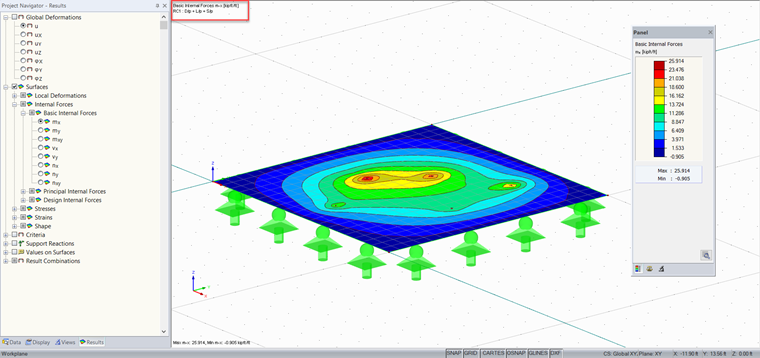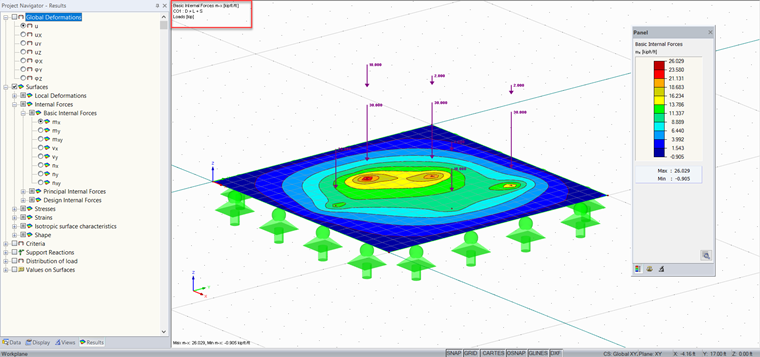The reason for the difference in results between superimposing LCs in COs vs. RCs is that when you apply the loads all at once in a CO, you get a different load distribution throughout the structure than in the RC, where the results are added together. This is based on FEA, where adding all of the loading together is different compared to solving the LCs individually and adding the results together. You can compare it to a different order of operations, to put it simply. You can see the comparison in the two images below. Image 02 has the load cases added up in CO1 and Image 01 has the LCs added together in RC1.
Differences in results can also be cause by nonlinear elements introduced in the model. For example, Tension Only members could be deactivated in a LC but activated in a CO because of loading changes. Keep nonlinear elements in mind when adding LCs together in a result combination, as results of failing objects will be set to zero during the super-positioning of the individual load cases. This could lead to unexpected results.

